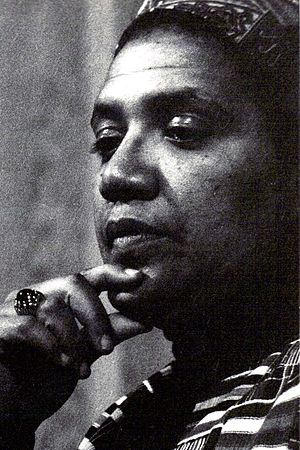My October celebration of poetry, sparked by the wonderful October Poetry Writing Month challenge, continues on. Today, I profile the great and wonderful Audre Lorde (1934-1992).
Lorde is an inspirational and illuminating figure, a scholar, poet, activist, and outspoken feminist. She is notable for a million reasons, not the least of which was her lifelong battle against social inequalities, inequalities that she identified as endemic and embedded in the very structure of American society.
Race, gender, and sexuality were ever-present in her work, as were her scathing critiques of the feminist movement of the 1970s and 1980s, which she decried for perpetuating a single definition of “woman,” one that took whiteness and heterosexuality as the norm. In refusing to acknowledge difference, Lorde argued that feminism could never reach its longed for goal of gender equality, for it would continue to reproduce other forms of inequality.
When it came to individual experience, Lorde also explored the dynamic of multiplicity that we encounter in our own selves. A self-proclaimed “black, lesbian, mother, warrior, poet,” her poetry and prose explored her struggles with reconciling the various aspects of her identity.
Lorde’s work on identity, inequality, and difference has resonated with me since I first encountered her as an undergraduate. It is her writing on silence, fear and courage, however, that truly inspires me. Silence, she reminds her readers time and again, is seductive. Silence is easier, safer, than speaking out, but that is both false and dangerous.
For Lorde, silence is tantamount to death. In order to live, we must speak our truth. Fear never fully fades, but as she wrote in her memoir, The Cancer Journals,
When I dare to be powerful, to use my strength in the service of my vision, then it becomes less and less important whether I am afraid.
Although she died from breast cancer in 1992, her work continues to live on. This clip from “A Litany for Survival” (hyperlinked in case the embedded video doesn’t play), a documentary on Audre Lorde’s life and many contributions, illustrates her intense passion and creativity.
I end with with poem for which the documentary is titled. “A Litany for Survival” is, in my mind, the perfect expression of Lorde’s fierce exhortations to live, to write, and to speak.
-oOo-
A Litany for Survival
For those of us who live at the shoreline
standing upon the constant edges of decision
crucial and alone
for those of us who cannot indulge
the passing dreams of choice
who love in doorways coming and going
in the hours between dawns
looking inward and outward
at once before and after
seeking a now that can breed
futures
like bread in our children’s mouths
so their dreams will not reflect
the death of ours:
For those of us
who were imprinted with fear
like a faint line in the center of our foreheads
learning to be afraid with our mother’s milk
for by this weapon
this illusion of some safety to be found
the heavy-footed hoped to silence us
For all of us
this instant and this triumph
We were never meant to survive.
And when the sun rises we are afraid
it might not remain
when the sun sets we are afraid
it might not rise in the morning
when our stomachs are full we are afraid
of indigestion
when our stomachs are empty we are afraid
we may never eat again
when we are loved we are afraid
love will vanish
when we are alone we are afraid
love will never return
and when we speak
we are afraid our words will not be heard
nor welcomed
but when we are silent
we are still afraid
So it is better to speak
remembering
we were never meant to survive




























